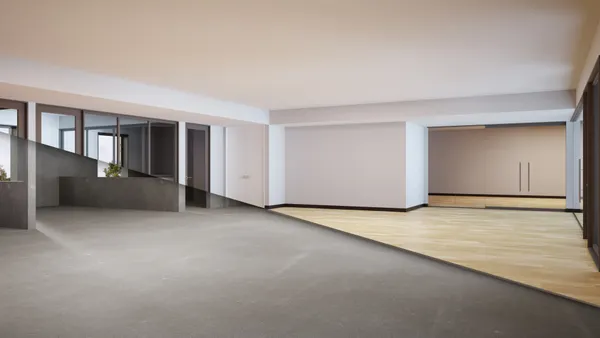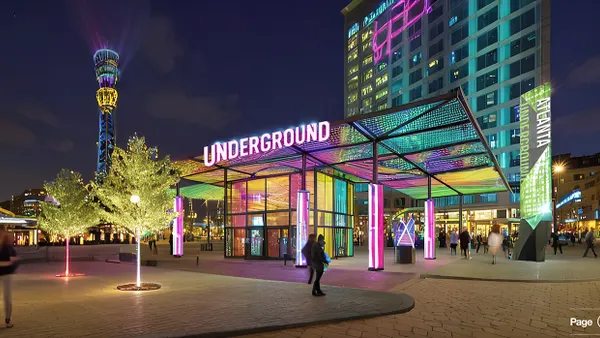Reshma Singh works at the U.S. Department of Energy’s Lawrence Berkeley National Laboratory, where she is director of IMPEL+, a “tech-to market incubation engine focused on building technologies.” She also directs the California Energy Commission’s R2M2 microgrids program.
Cities, states, labor and industry recently announced that they’re teaming up with the Biden administration to launch the Building Performance Standards Coalition, a first-of-its-kind partnership dedicated to slashing the building sector’s energy use and greenhouse gas emissions to create healthier, cleaner, more affordable buildings and jobs that pay well.
In this decisive decade for climate action, the effort couldn’t be more timely. It’s critical to remember that even our best, most innovative ideas won’t have any impact if they never reach the market.
Buildings and construction have immediate climate impacts as well as lasting market and societal implications. They’re responsible for about 40% of energy-related global greenhouse gas emissions, with operations accounting for 28% and embodied emissions from construction and materials like steel and cement accounting for 11%. Thus, well-funded building innovation supported by smart climate policy is critical for the transformation of the built environment.
There’s much opportunity to put those innovations into practice because, stunningly, half of the homes and buildings that will be standing in 2050 are yet to be built. We are seeing rapid growth in urbanization and a remarkably pandemic-resilient construction industry slated to grow to $15.2 trillion by 2030.
Energy-saving technologies and renewable materials have a strong near-term cost-benefit profile. Because buildings can stand for 50 to 100 years, they also reduce operations-related emissions in the long term.
Building-energy technology is a hot field for radical decarbonization. Building tech innovations are decentralized, from their design — which is influenced by climate and culture — to their manufacture and installation. Compared with large, centralized energy infrastructure projects, buildings require less investment.
There’s huge and growing interest in building innovations, including technologies that enable
- Urban heat resilience
- Materials circularity that reduces, reuses and recycles while storing gigatons of carbon in buildings
- Efficiency in operations that can cut down on energy waste in our built environment, which can average 30% of energy use
- Electrification of thermal equipment, and
- Equitable access to health and wellness in homes and buildings.
Building technologies can also provide grid services by leveraging load-flexibility strategies to smooth out spikes in electricity demand, better integrating renewable energy and electric vehicles, controlling peak loads, and reducing power costs.
But the road from invention to commercialization is beset with multiple “valleys of death.” Innovation teams need investment, technology de-risking, and robust partnerships, especially given a building sector that has a long tradition of slow adoption. And the people who excel at creating new solutions don’t always have the entrepreneurial mindset they need to attract investment and succeed in the world of business.
I've witnessed this phenomenon with startups reviewed and supported by DOE programs, but I have also seen the impact that dovetailing public grants and green private capital can have for commercialization.
As climate change results in more natural disasters, or a pandemic requires social distancing, people are spending the majority of their lives in all-important buildings. Building innovations can make everyone’s homes, workplaces, schools, churches and other buildings of significance healthier and more resilient. They can promote good ventilation, thermal comfort and visual comfort, while also being less expensive to operate and more adaptive to changes and risks.
Decarbonizing the built environment also offers a once-in-a-generation opportunity to spur economic growth, slash air pollution and improve public health, and help families and communities build resilience to the increasing effects of climate change.
As we innovate our way to a net-zero world, we will continue to grow the clean-energy sector of our economy, which already employs more workers than legacy energy sectors such as oil, gas and coal. We will create long-term jobs that pay well all along the value chain, from manufacturing, design, construction and renovation to energy management, engineering, sales, and software development. Time is of the essence, and how we build now — sustainably — will alter the course of history.
Contributed pieces do not reflect an editorial position by Smart Cities Dive.
Do you have an opinion on a similar issue or another topic Smart Cities Dive is covering? Submit an op-ed.












